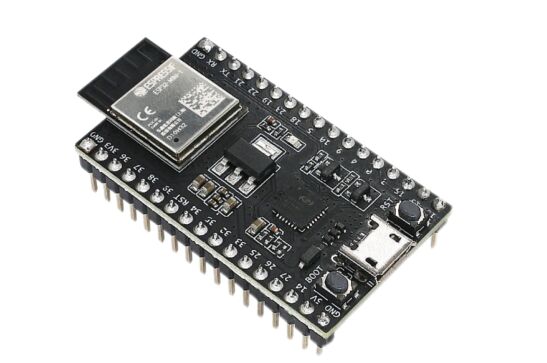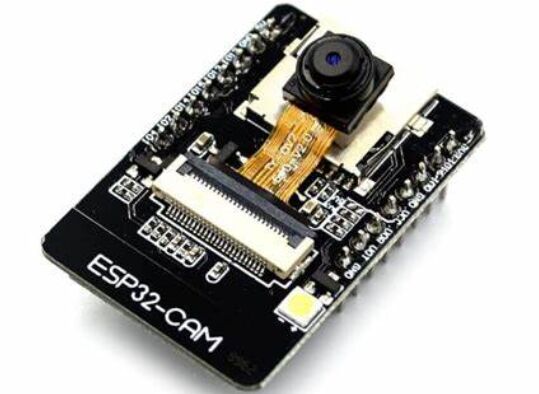By ESPRESS 142
ESP32 is a low-power, high-performance Wi-Fi and Bluetooth integrated system-on-chip, mainly used for the development of Internet of Things and embedded systems.
ESP32 is a microcontroller developed by Espressif Systems. It is an upgraded version of ESP8266 with higher performance and more functions.

Ⅰ.Features of ESP32
•ESP32 is highly integrated with built-in antenna switches, RF baluns, power amplifiers, low-noise receiving amplifiers, filters and power management modules. The ESP32 adds priceless functionality and versatility to your application with minimal printed circuit board (PCB) requirements.
•Low power consumption: Compared with other microcontrollers, ESP32 has extremely low power consumption and supports deep sleep and other low-power mode states to save power.
•ESP32 is designed for mobile devices, wearable electronics and IoT applications, achieving ultra-low power consumption by combining multiple types of proprietary software. ESP32 also includes state-of-the-art features such as fine-grained clock gating, various power modes, and dynamic power scaling.
•Bluetooth: ESP32 supports classic Bluetooth and Bluetooth Low Energy (BLE) - suitable for various IoT applications
•ESP32 operates reliably in industrial environments with an operating temperature range of –40°C to +125°C. ESP32 uses advanced calibration circuitry to dynamically eliminate external circuit defects and adapt to changes in external conditions.
•Dual Core: Most ESP32 are dual core, they come with 2 Xtensa 32-bit LX6 microprocessors: Core 0 and Core 1
•The ESP32 can run as a complete stand-alone system or as a slave to a host MCU, reducing communication stack overhead on the main application processor. ESP32 can connect to other systems through SPI/SDIO or I2C/UART interfaces, providing Wi-Fi and Bluetooth functionality.
•Rich peripheral input/output interfaces - ESP32 supports capacitive touch, ADC, DAC, UART, SPI, I2C and other inputs (read data from the outside world) and output (send commands/signals to the outside world) Peripherals, pulse wide modulation and so on.
Ⅱ.ESP32 specifications
•MCU:Xtensa single-core 32-bit L106
•802.11 b/g/n Wi-Fi:HT40
•Typical frequency:160 MHz
•Bluetooth:Bluetooth 4.2 and BLE
•Static Random Access Memory:Supported
•SPI/12C/12s/serial port:4/2/212
•Hardware/software PWM:None/8 channels
•Universal input and output interface:38
•DAC:8 bits x 2 channels
•ADC:12-bit x18 channels
•CAN:Support
•Touch sensor:Supported
•Ethernet MAC interface:Supported
Ⅲ.ESP32 Hardware and Software Features
ESP is supported by a wide range of open source communities and has a large number of documents, sample codes and forums to facilitate developers to obtain help and share experiences. It is supported by an extensive open source community and has a large amount of documentation, sample code and forums for developers to get help and share experiences. 32 Hardware and Software Features
•Hardware features
1.Bluetooth: Integrated Bluetooth 4.2 (BLE) and Bluetooth Classic support, enabling it to communicate with other Bluetooth devices.
2.Wi-Fi: Supports 802.11 b/g/n standards, has a built-in TCP/IP protocol stack, and can be connected to a wireless local area network (WLAN).
3.Dual-core processor: ESP32 has a dual-core Tensilica LX6 processor, which can run in high-performance and low-power modes at the same time, providing better multi-tasking and power consumption optimization.
4.GPIO and peripheral interfaces: It has rich general-purpose input and output pins (GPIO) and supports a variety of peripheral interfaces, such as I2C, SPI, UART, I2S, etc., to communicate with various sensors and peripherals.
5.Storage: Built-in flash memory and external memory interface, supports external Flash, SRAM and MicroSD cards.
6.Analog input: The built-in analog-to-digital converter (ADC) supports analog signal input and can be used to measure sensor data.
7.Security: Provides a hardware-accelerated encryption engine that supports TLS, SSL and WPA/WPA2 security protocols to protect the security of data communications.
8.RTC (Real-Time Clock): Integrated real-time clock (RTC) module provides accurate time tracking and low-power clock.
•Software features
1.Development framework and tool chain: Provides ESP-IDF (Espressif IoT Development Framework) as the main development framework, and also supports Arduino IDE and MicroPython, etc.
2.Debugging and logging: Provides rich debugging functions and logging to make it easier for developers to diagnose and solve problems.
3.FreeRTOS: Integrated FreeRTOS real-time operating system, supports multi-tasking, making it easier to perform concurrent programming.
4.OTA upgrade: Supports Over-The-Air (OTA) upgrade of firmware through wireless network to facilitate device updates.
5.Open source community support: It is supported by an extensive open source community and has a large number of documents, sample codes and forums to facilitate developers to get help and share experiences.

Ⅳ.Application fields of ESP32
1.Smart home
•Control lights, home appliances, security systems, etc.
•Monitor environmental parameters such as temperature, humidity and air quality.
2.Unmanned aerial vehicle (UAV)
•Control and monitor drones.
•Realize autonomous navigation and sensor data collection of aircraft.
3.Industrial automation
•Monitor and control industrial equipment.
•Implement industrial IoT solutions to improve production efficiency.
4.IoT devices
•Used in smart cities, smart agriculture and other fields.
•Connect sensors and actuators to build IoT devices.
5.Health care
•Design portable medical devices such as health monitors.
•Connect medical equipment to the cloud platform to achieve remote monitoring.
6.Smart wearable devices
•Design smart watches, fitness trackers and more.
•Collect biometric data and synchronize with cloud services.
7.Intelligent transportation
•For vehicle tracking and monitoring.
•Build an intelligent transportation system to optimize traffic flow.
8.Embedded control system
•Implement embedded control and feedback systems.
•Control and monitor embedded devices such as robots, vending machines, etc.
9.Education and academic research
•Prototyping and development in the laboratory.
•Teaching and research projects for embedded systems and IoT.
Ⅴ.ESP32 GPIO pin guide
The ESP32 chip has 48 pins and has multiple functions. Not all ESP32 development board pins are exposed, and some pins should not be used. The ESP32DEVKIT V1 DOIT board usually comes with 36 exposed GPIOs that can be used to connect peripherals.
1.Power pin
Typically, all boards come with power pins: 3V3, GND, and VIN, which can be used to power the board (if not powered via the USB port), or to power other peripherals (if the board is powered via the USB port) powered by).
2.General purpose input and output pins (GPIOS)
Almost all GPIOs are assigned a number, so they need to be called by their number.
With the ESP32, you can decide which pins are UART, I2C or SPI simply by setting them in code. This is possible because the ESP32 chip's multiplexing feature allows multiple functions to be assigned to the same pin.
If you do not set them in code, the default configuration pins are as shown below (pin locations may vary depending on the manufacturer). Additionally, there are some pins that have specific functions that make them suitable or unsuitable for specific projects.

The location of the GPIOs may vary depending on the board model, however, typically each specific GPIO works the same way regardless of the development board used (with some exceptions). For example, no matter what the board is, usually GPIO5 is always the VSPI CS0 pin, and GPIO 3 always corresponds to VSPI MOSI for SPI communication, etc.
Ⅵ.Development environment configuration of ESP32
1.Install Arduino IDE
Arduino IDE is an open source cross-platform IDE that can be used to control Arduino boards and other development boards based on the ATmega328 microcontroller.
Download the Arduino IDE from the Arduino official website and follow the prompts to install it.
2.Install the ESP32 development environment
Installing the ESP32 development environment usually includes installing the development framework, drivers and selecting a suitable integrated development environment (IDE).
Frequently Asked Questions
1.What security features does ESP32 have, such as encryption and authentication?
ESP32 integrates a hardware-accelerated encryption engine and supports encryption algorithms such as AES, SHA-2 and RSA. This helps improve the efficiency of encryption and decryption operations. ESP32 supports Transport Layer Security (TLS) and Secure Socket Layer (SSL) to protect communications between the device and the server. This is achieved through the WolfSSL library.
2.What Bluetooth protocols and features does ESP32 support?
Classic Bluetooth: A2DP, SPP, AVRCP, HID. Bluetooth Low Energy: GAP, GATT, LE L2CAP, ATT, Security Manager.
3.What is an ESP32 used for?
ESP32 is widely used SoC microcontroller developed by Espressif Systems. It is low cost and highly versatile microcontroller used for various applications which include wireless communication, IoT (Internet of things) devices, home automation, robotics, embedded systems etc.
4.Is ESP32 used professionally?
The ESP32 is a viable commercially made product and is widely used both by experimenters and in production of commercially made products.